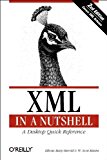This was the official first day of the conference, so the events did not begin until 11:00 so I was able to rest in the morning and get ready. pre 11:00
Since Monday, the ACLU was also having it’s Biennial Meeting where the various ACLU boards from around the country get together to decide policies and stands for the whole organization. I was able to sit in one of their sessions and watch the inner workings of the ACLU. Parliamentary proceedings are not very exciting.
11:00 am - Next Generation Orientation
The ACLU was really pushing to get youth involved in the events and the organization. Of the 1500 people who attended the conference, nearly 400 were in the youth category, granted that was helped by the fact that the age range was 16-27, but given the demographics of the members, it worked. And I would say from what I saw that probably 1/3 to 1/2 of the youth were in high school; very impressive.
This opening session was a rally for the younger crowd, of which I was near the oldest. We were introduced to some of the youth advisory board members as well as some notable persons in the audience. These included the student who sued his high school after being expelled for wearing a “Bush is a Terrorist” t-shirt. Very cool.
1:00 pm - Official Opening of the Conference
The opening remarks by Nadine Strossen (President) and Anthony Romero (Executive Director) were amazing. Here is a link to a webcast of Anthony’s speech. Both of them have learned that in order to move into the next generation the organization needs to adapt to the modern 30 and 60 second sound bite culture we live in and the speech he gave is designed both as an excellent whole and also as a serious of excellent smaller remarks.
3:00 pm - Congressional Mobilization for Freedom
This was the preparation for Thursday’s big event on the Hill. The idea being that having 800 of the 1500 ACLU members attending go to the hill and visit their congressional members. There were a total of 27 people from Virginia but not all were planning on attending.
Aimee took the leadership role and she started planning out different groups of people to go to different offices. We did have one scheduled visit at 10:00 am with Senator Warner’s office. I was the only person who lived in Jo Ann Davis’ district, so I was to be the primary speaker at that meeting.
The speakers at this session gave brief talks about the issues they wanted us to cover including the Victims Rights Amendment, Patriot Act (I and II), the Flag Desecration Amendment, and End Racial Profiling Act. They also gave us a scorecard of how our representatives voted on these issues; all of the ones I would be visiting had straight negatives. Tomorrow would be an interesting day.
As the event was going on, I talked with Aimee as I had learned that she was responsible for the VA ACLU website. She had taught herself HTML but still had some questions. She hopefully will take me up on my offer to help her learn more HTML so the site can better represent the needs of VA.
7:00 pm - Freedom Fair
This was a social event with some free food and very expensive drinks ($4 sodas). I hung around there for an hour or so with one of the other Virginia members and talked with people from around the country. There was also a Youth event at the same time that I wandered over to and talked with some of the people there.
after
As I was heading back towards my room, I ran into Kent Willis (the Execuive Director of the VA Chapter) and his wife about to head to dinner with one of the VA board members (whose first name was George and whose last name I have since forgotten). George and I had eaten already, but we joined Kent and his wife to a mediterranean restaurant called Medeterra. It had very good martinis (I had the Sour Apple) and we had pleasant conversation on all sorts of topics.
After being rained on as we walked back to the hotel, I made my way to my room and bed. I found it hard to sleep and ended up watching most of Black Hawk Down.
